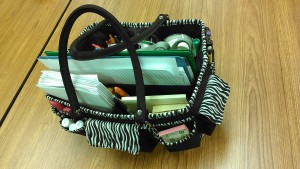So, you have a bag of tricks, but you still want to know ways to get students to love writing. What do you do? Here are my top ten tips for motivating writers.
Top Ten Tips
10. Draw, then write to activate the creative right side of the brain.
Allow students to sketch quickly before they begin writing. This gets their pencils moving while thinking about what they want to say. It also helps activate the creative portions of the brain so they have something to write about.
9. Explicitly connect writing to the real-world; tell students why skills are important.
Students need to know why they have to learn skills; making it relevant helps them to know that they have to pay attention. A quick explanation at the beginning of a lesson is all you need: “You are learning how to write on demand because most of the writing we do as adults is done quickly to turn into our bosses, and we don’t have a lot of time to edit or rewrite.”
8. Don’t bleed all over their papers. Require a limited number of changes and occasionally enlist an “assistant.”
Yes, some students make a lot of errors in their writing. They misspell tons of words, and have a single punctuation mark on an entire page. But, pointing out every single error is not helpful. In fact, it can serve to defeat students, making them feel like they can’t do anything right. Pick one or two things to point out and have students to work on.
7. Share lots of examples of good writing.
Mentor texts are a very powerful tool. Show students a strong example of something, such as great introduction or use of description words, and model explicitly how you would use that same technique in your own writing. Explicitly say to students, “Look what this author did right here. I am going to try that in my own writing. When you write, you may want to try this too.”
For great ideas for mentor texts, check out Ralph Fletcher’s books on Craft Lessons or Marcie Flinchum Atkins’s webpage.
6. Break it down into manageable chunks.
Writing an entire story or essay can be overwhelming for some students. Try breaking it down into smaller pieces: write the introduction or hook, and then guide students in writing theirs. (Students who get done quickly could work on free-writing while waiting for you to model the next part.)
5. Tap into technology: dictation, typing, or even apps are appealing.
Kids love technology; why not capitalize on that and use technology to have students produce or enhance their writing? Students could use a Neo 2 (formerly called an AlphaSmart) or personal keyboards, tablets, or dictation software such as Dragon ® to produce writing. Other programs could be used to publish or illustrate writing.
4. Find fun tools: gel pens, scrapbook paper, etc.
Do you have a special writing tool that you like to use? A particular pen or perhaps a mechanical pencil? Do you like writing in a certain notebook? Kids have preferences too! Let them write with some fun pens or pencils to encourage them to write more. Another idea is to allow students to revise in pen; this can motivate them to actually revise. Either way, the utensil and paper don’t really matter; all that matters is getting kids to write.
3. Capitalize on collaboration. Let them talk!
Collaboration is a very powerful strategy for writing and beyond. Encourage students to orally rehearse what they are going to write about. This cements their ideas, and also allows them to play with different ways to word things before committing to paper. Students could also collaborate on products–working together to practice applying a skill from a mini-lesson or to write a story.
2. Topics Matter. Offer choice of things that interest students.
Yes, students have to write about the Revolutionary War, and about other topics that you assign to them. But, in order for students to find their true, inner writers, they must write about what they are passionate about. This may be Minecraft, hunting, or another story about Fluffy the hamster. When students select their topics, it allows them to explore writing techniques in a genre and subject with which they are familiar.
1. Celebrate success!! Hold an authors’ party complete with awards.
This is a great way to make everyone in your class feel like a bonafide writer. Students could publish their works on the computer, or your could enlist one of many programs such as Student Treasures to make their writing look professional. Make the celebration a big event; invite parents and the principal, and have students read selections aloud. For an added touch, give each student an award. I used to give gold seals that I called “Burke-decots.” Everyone got a different award: best illustrations, funniest, best dialogue, and so on.
Some of these tips are techniques mentioned in Writing Next, A Report to the Carnegie Foundation, about methods that have been proven by research to improve students’ writing. See the full report here.
